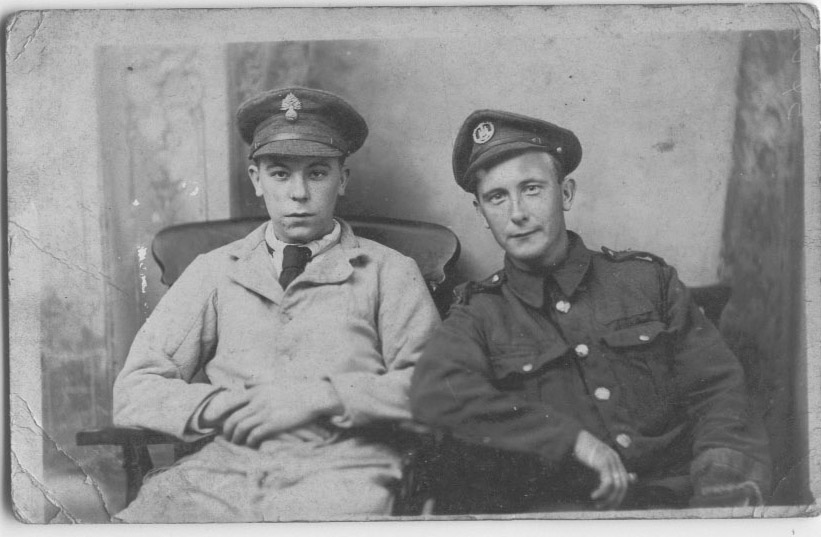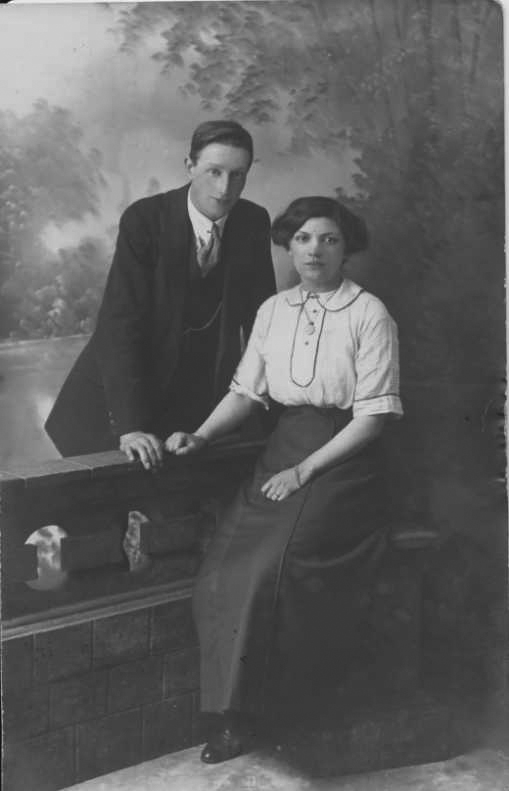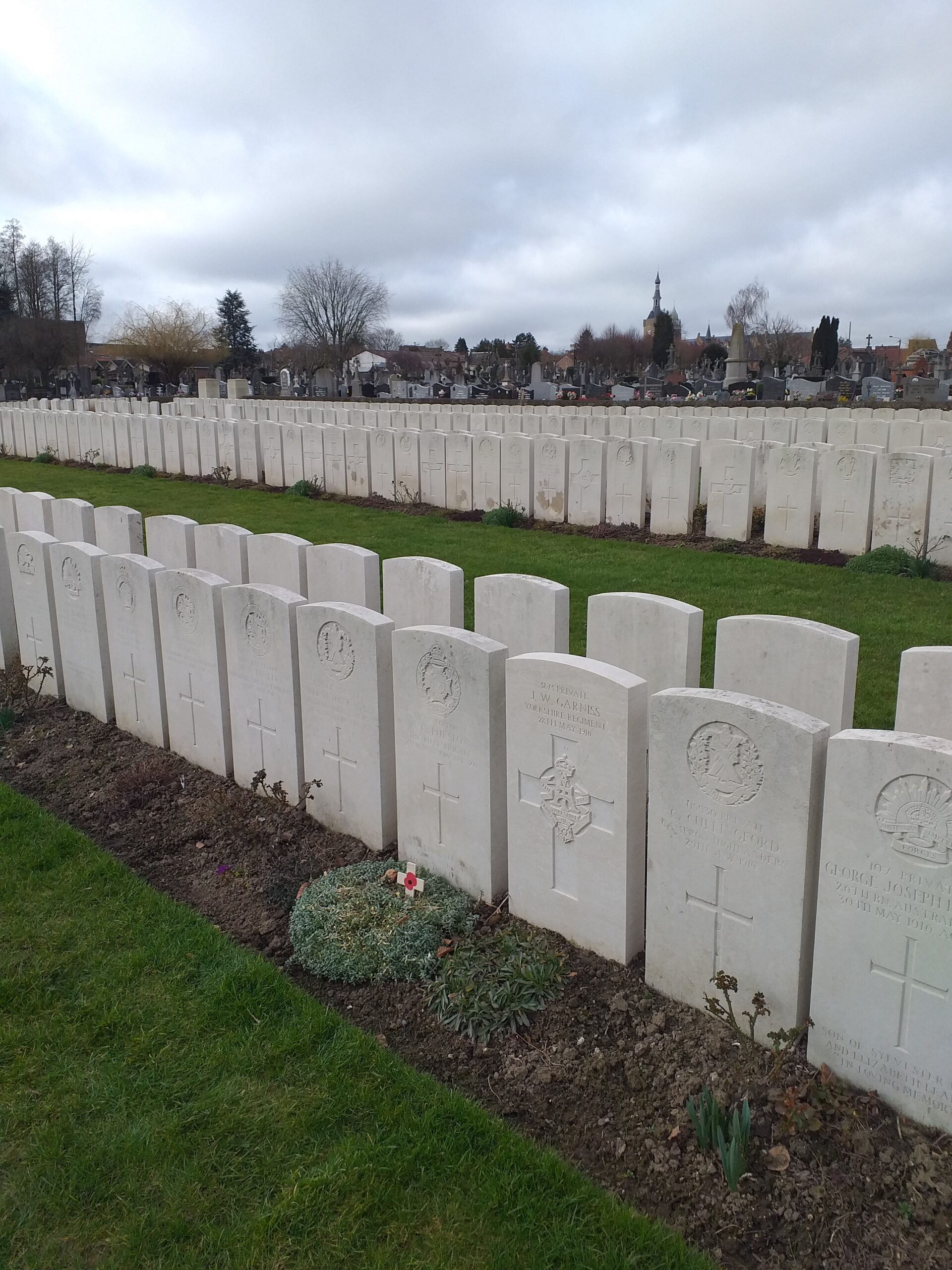E. F. WhitingService no. 25607Private, East Surrey Regiment, 8th BattalionBorn in Dover, Kent; enlisted in Dorking, Surrey; lived in ClaphamDied of wounds on 14 October 1917, aged 26CWGC: “Son of Edward Whiting, of 28 Durand Gardens, Clapham Road, London.”Remembered at Dozinghem Military Cemetery, Belgium and on the war shrine at St Michael’s Church, Stockwell Park […]
Thomas Frederick Wellington
T. F. WellingtonService no. 70152Driver, Royal Engineers, L.Z. Cable SectionBorn in Southwark; enlisted in Houghton Regis, Bedfordshire; lived in LambethKilled in action on 2 July 1915, aged 26CWGC: “Son of Mrs Rose Cockman, of 22 Horace Street, South Lambeth, London.”Remembered at Ypres (Menin Gate) Memorial, Ypres, Belgium British Army WWI Service Records 1914-1920 On 10 […]
George Robert Henry Wedderburn
G. WedderburnPrivate, London Regiment, 19th Bn. Service no. 611750Died of illness in early 1919, after discharge, aged 26Buried in Southwark 6 March 1919 Chris Burge writes: George Wedderburn was born on 30 August 1892, the first child of George Wedderburn and Clara Wilmott of 5 Chapel Street (since renamed Mowll Street), Stockwell. George was baptised […]
James Trimmer
J. TrimmerService no. 9374Serjeant, The Loyal North Lancashire Regiment, 1st BattalionBorn in Battersea; enlisted in LondonKilled in action on 18 August 1916, aged 26CWGC: “Son of Harry and Sophia Trimmer, of London; husband of Jane Elizabeth Trimmer, of 94 Wilcox Rd., South Lambeth, London.”Remembered at Delville Wood Cemetery, Longueval, Somme, France Information from the 1901 […]
David Townsend
D. Townsend Private, East Surrey Regiment, 1st Bn. Service no. 442Died on 8 May 1917, aged 26Remembered at Arras Memorial, Pas de Calais, France Chris Burge writes: David Townsend was born in August 1890, the third child of Harry and Elizabeth. In the 1891 census, the couple were living at 27 Broomgrove Road, off Stockwell […]
Cecil Francis Seymour
C.F. SeymourLance Corporal, Scots Guards, 2nd Bn. Service no. 14265Died on 24 August 1918, aged about 26Remembered at Mory Street Military Cemetery, St Leger, France and on the Rainhill Asylum roll of honour, now in the care of Rainhill British Legion Cecil Francis Seymour was born in 1892 at Christmas Common, Watlington, Oxfordshire, the youngest […]
Frank William Edmund Russell
F. W. E. RussellService no. 302875Rifleman, London Regiment (London Rifle Brigade), “D” Coy. 1st/5th BattalionBorn in Southwark; enlisted in Lambeth; lived in StockwellKilled in action on 16 August 1917, aged 26CWGC: “Son of Mr and Mrs F. Russell, of 89, London Rd., Southwark, London; husband of Katherine L. Russell, of 33 St Martin’s Rd., Stockwell, […]
Alfred Roskilly
A. RoskillySecond Lieutenant, The Queen’s (Royal West Surrey Regiment), 7th BattalionKilled in action age 26 on 3 May 1917CWGC: “Son of Mr and Mrs A. J. Roskilly, of 96, Stockwell Park Road, London; husband of Ruth Roskilly, of 16, Briarwood Road, Clapham Park, London.”Remembered at Arras Memorial, France and at St John’s Church, Clapham Road, London […]
Charles Henry Randell
C. H. RandellService no. 9114Private, South Lancashire Regiment, 2nd Battalion (described as a “drummer” in the Soldiers Died in the Great War 1914-1919 database)Born in Lambeth; enlisted in London; lived in WandsworthKilled in action on 25 September 1915, aged about 26Remembered at Ypres (Menin Gate) Memorial, Ypres, Belgium Information from the censuses Charles Henry Randall’s two […]
William Charles Purslow
W. C. PurslowService no. S/12717Corporal, Rifle Brigade, “B” Coy. 3rd BattalionBorn in Plymouth; enlisted in London; lived in StockwellDied of wounds on 29 May 1916, aged 26CWGC: “Husband of Eleanor Annie Hillyer (formerly Purslow), of The Drill Hall, Richmond, Surrey.”Remembered at Bailleul Communal Cemetery Extension, Nord, France and on the war shrine at St Michael’s […]



